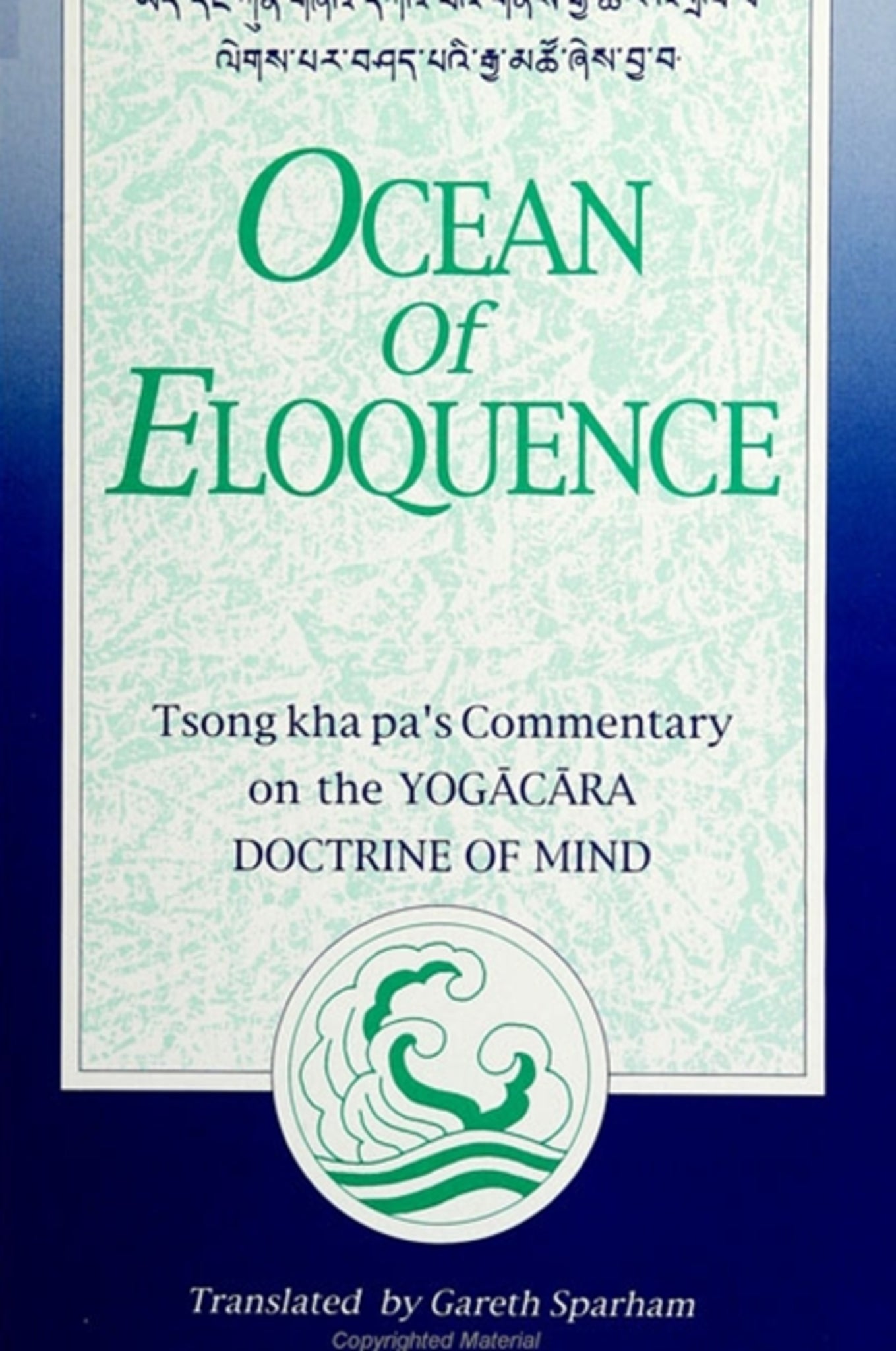We're sorry. An error has occurred
Please cancel or retry.
Ocean of Eloquence

Some error occured while loading the Quick View. Please close the Quick View and try reloading the page.
Couldn't load pickup availability
- Format:
-
14 September 1993

This book is of particular interest because it shows the presence of the Yogācāra (Mind Only) school in Tibet. It is well known that the Mādhyamaka school flourished in Tibet, but less well known that Yogācāra doctrines were also studied and practiced. The former school stresses the inexpressible ultimate; the latter, the natural luminosity of mind. This is probably the best introduction to the distinctive eight consciousness systems of Yogācāra. It also makes understandable the different meanings of the profound alaya-vijnana (the storehouse consciousness, or basis of all) that is the pivotal eighth consciousness in their system.
For those interested in meditation, the author's introduction explains how earlier Tibetan meditation (the method of allowing mind to look into its own pure nature) uses the eight-consciousness system.
The book is remarkable in that it addresses the problem of how a person trapped within the confines of a limited and deluded personality can transcend that state and attain liberation. By his inquiry into the process of transformation, Tsong kha pa makes profound comments which will interest those who ask whether enlightenment is a gradual process or a sudden breakthrough.
Tsong kha pa (1357-1419) wrote extensively on nearly every aspect of Buddhist religious philosophy and practice. The text edited and translated here is the Yiddang kun gzhi dka'ba'iignas rgyacher'grel pa legs par bshad pa'i rgya mtsho, often referred to as the Commentary on the Difficult Points.


Abbreviations
Preface
Technical Note
Introduction
The general context for the arising of the alaya-vijnana doctrine
Origins of the Yogacara alaya-vijnana doctrine
Samkhya and Yogacara
The alaya-vijnana within the eight-consciousness model
Tsong kha pa's exegesis
Life of Tsong kha pa
Problems of interpretation in Tsong kha pa's earlier and later works
Early teachers and date of the text
Kun gzhi in Tsong kha pa's later works
Kun gzhi in Tibet before Tsong kha pa
Kun gzhi at the time of Tsong kha pa
Concluding Remarks
Translation
1. Introduction: Origins of the Mind Only Doctrine
2. Alaya-vijnana as Basis
Residual impressions as objective support
Nature of the alaya-vijnana
Five mental factors
Etymology of alaya-vijnana
3. Alaya-vijnana as Seed
Mechanics of seed information
Divisions of vasana
Relation of the seeds and basis
Characteristics of vasana
4. Seeds of Deliverance
Derivation of the word alaya
Cessation fo alaya-vijnana
5. Definition of Klista-manas
6. Proofs of Alaya-vijnana
Eight proofs
Discursus
7. Proofs of Klista-manas
8. Two Refutations and Final Remarks
Refuting a set of nine consciousnesses
Refuting a set of one consciousness
Concluding Remarks
Tibetan Text
Bibliography
Index



